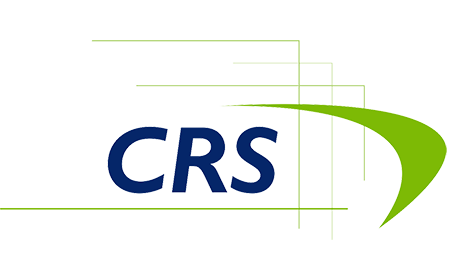Understanding Tax Credits Available to Start-Up Retirement Plans
The SECURE 2.0 Act of 2022 significantly increased tax incentives to encourage businesses to sponsor a retirement plan. This article will focus on and clarify three different types of tax credits providing small business owners an opportunity to lower their taxes when they start a retirement plan for their employees.
There is a fourth tax credit offered to military spouses that is not covered in this article. Instead, we will focus on the broadest-reaching tax credits. Please contact CRS if you would like to learn more about the military tax credit.
Summary of Tax Credits Covered in This Article
- Employer Automatic Enrollment Credit
- Employer Start-Up Cost Tax Credit
- Employer Contribution Tax Credit
1. Automatic Enrollment Credit
Unlike the next two credits we will cover, the first credit is one that is available to all plans (not just new plans).
Small employers with 100 employees or less, earning $5,000 or more annually, are eligible for a $500 tax credit each of the first three years if they add automatic enrollment as a plan enrollment feature.
Going forward, any new plan that has more than 10 employees must utilize Automatic Enrollment and Automatic Increase, so they are automatically eligible to claim this credit. However, as stated in the initial sentence of this section, existing plans can claim this credit if they add an Automatic Enrollment Arrangement to their plan.
2. Start-Up Cost Tax Credit
Businesses that have not offered a retirement plan in the last three years are eligible to receive a tax credit that covers a significant portion of the expenses to start and operate a plan for the first few years. The amount of the credit is different, based on the number of employees the company has.
Businesses with 1 to 50 Employees
The tax credit is equal to 100% of company-paid expenses for the establishment and the ongoing maintenance of the plan for the first three years of the plan. The credit has an annual limit of the lesser of $5,000 or $250 per NHCE.
For Businesses with 51 to 100 Employees
The tax credit is equal to 50% of company-paid expenses for the first three years and is also limited annually to the lesser of $5,000 or $250 per NHCE.
*Larger companies (over 100 employees) are not eligible for this credit.
What are eligible expenses that count toward this credit?
Eligible expenses include ordinary and necessary costs to set up, administer, and educate employees about the new plan that are paid by the company. This does not include any expenses that are paid by the plan or by the participants.
Expenses may include:
- TPA fees
- Employee education expenses
- Financial advisor fees
- Recordkeeping fees
- Any other expense necessary to establish and operate the plan
3. Employer Contribution Tax Credit
There is also a new tax credit that can help offset employer contributions (typically in the form of matching or profit sharing) made over the first five years of the retirement plan.
To receive this credit, a business must meet the same eligibility requirements described under the Startup-Cost Tax Credit section above (100 employees or less).
This credit offsets the employer’s contributions (dollar-for-dollar) up to $1,000 for any employee who makes $100,000 a year, or less (will be indexed for future years after 2023).
Limitations for Businesses with 50 or Fewer Employees
For businesses with 50 or fewer employees, the employer can claim:
- 100% of the credit the first two years (including the year they start the plan)
- 75% of the credit the third year of operation
- 50% in the fourth year
- 25% in the fifth year
Starting in the sixth year, the tax credit will expire and all contributions are treated like a standard business deduction.
Limitations for Businesses with 51 – 100 Employees
For businesses with over 50 employees, the deduction gets reduced by 2% for each employee they have over 50.
For example, an employer with 60 employees will have their deductions, described above, reduced by 20% (10 employees over 50 multiplied by 2%).
In this example, for a company with 60 employees, the credits in all years are reduced by 20%. So, the company would receive 80% of what smaller companies would receive in each year.
In year three, the company would receive a 60% credit (multiply .80 x .75 = 60%) credit.
In year four, the company would get a 40% credit (.80 x .50).
And in year five, they receive a 20% credit (.80 x .25).
As you get closer to 100 employees, the credit is significantly reduced and totally eliminated at 100 employees.
See the table below.
| Number of Employees | Year 1 & 2 | Year 3 | Year 4 | Year 5 |
| 50 Employees | 100% | 75% | 50% | 25% |
| 52 Employees | 96% | 72% | 48% | 24% |
| 60 Employees | 80% | 60% | 40% | 20% |
| 70 Employees | 60% | 45% | 30% | 15% |
| 80 Employees | 40% | 30% | 20% | 10% |
| 90 Employees | 20% | 15% | 10% | 5% |
The following formula will calculate the credit percentages for the number of employees in your specific plan:
Credit % = ( 100% – ( ( # of EEs – 50 ) * 2% ) ) * Credit for < 50 EEs
While there is a step-down tax credit schedule applied, these credits can add up to meaningful savings to the business.
See the table below for an example.
| 75 Employees | Year 1 | Year 2 | Year 3 | Year 4 | Year 5 | Total |
| Percentage of Credit | 50% | 50% | 37.5% | 25% | 12.5% | |
| Actual Credit in Dollars | $37,500 | $37,500 | $28,125 | $18,750 | $9,375 | $131,250 |
See the table below for another example.
| 90 Employees | Year 1 | Year 2 | Year 3 | Year 4 | Year 5 | Total |
| Percentage of Credit | 20% | 20% | 15% | 10% | 5% | |
| Actual Credit in Dollars | $18,000 | $18,000 | $13,500 | $9,000 | $4,500 | $63,000 |
The two examples above assume you have 75 or 90 employees who earn $100,000 or less – and have received in excess of $1,000 in employer contributions (matching or profit sharing). Once you start to factor in employees who receive less than $1,000 in employer contributions, the calculation gets more complicated.
It is worth it for businesses to contact their CPA to request a calculation for the tax credits they may be eligible to receive.
Summary Overview of SECURE 2.0 Employer Tax Credits
| Employer Size | Start-Up Cost Tax Credit | Employer Contribution Tax Credit | Automatic Enrollment Credit |
| 1 – 50 employees | 100% of Eligible Startup Costs | Up to 100% employer contribution for the first 2 years. 75% in the third year. 50% in the fourth year. 25% in the fifth year. | $500 |
| 51 – 100 employees | 50% of Eligible Startup Costs | Same as above, but phased out based on the number of employees above 50 | $500 |
| 100+ employees | 0% of costs | $0 | $0 |
| Considerations | Available for first three tax years plan is maintained. Maximum credit is lesser of $5,000 or $250 times the number of eligible non-highly compensated employees. | Available for the first five tax years plan is maintained. Credit is available only for contributions for employees who make $100,000 or less in FICA wages. The maximum credit per employee is $1,000. | Available for the first three tax years plan offers an eligible automatic contribution arrangement. |
In Summary
These tax credits are complex and have eligibility rules and step-down schedules. Please consult with CRS to learn more or to discuss a specific client that you have in mind.
Be sure to download our SECURE 2.0 Tax Credits Flyer>>

Written by Michael Davis
Michael Davis has been in the retirement plan industry since 1994 and is our Vice President of Sales at CRS. Michael can be reached via email at .
CRS is not a CPA firm and does not provide tax, legal or accounting advice. This material has been prepared for informational purposes only, and is not intended to provide tax, legal or accounting advice. You should consult your own tax, legal and accounting advisors before engaging in any transaction.




